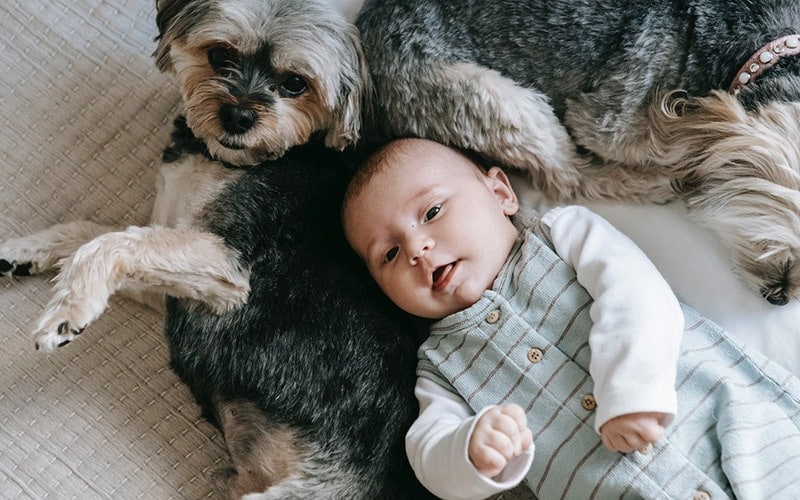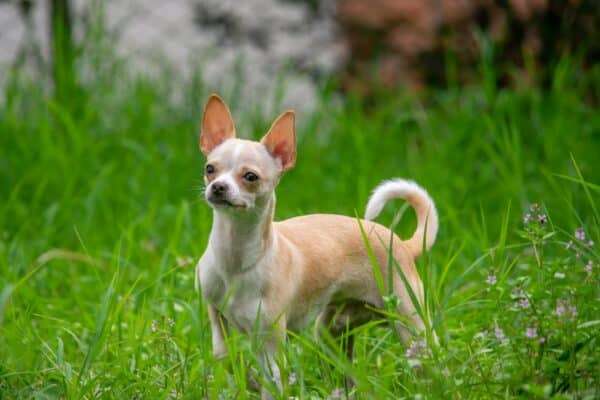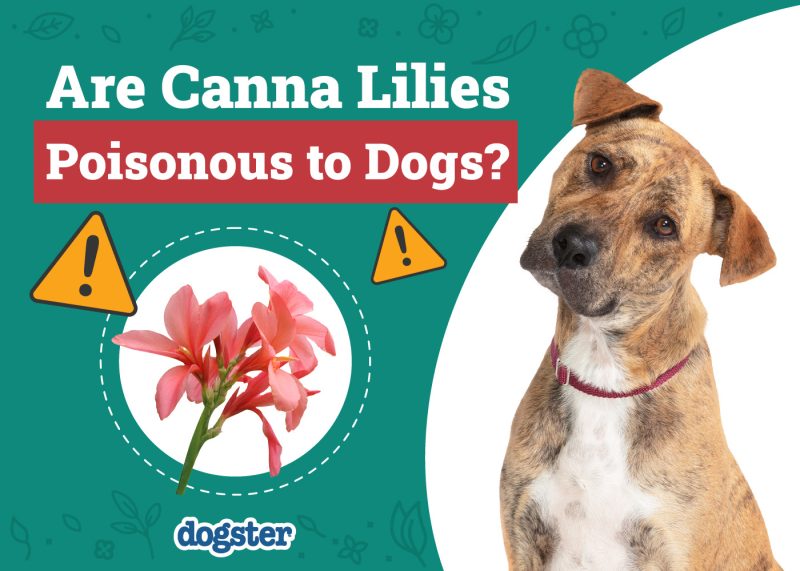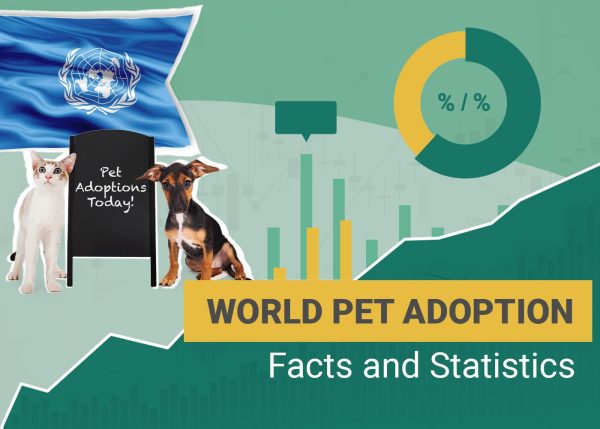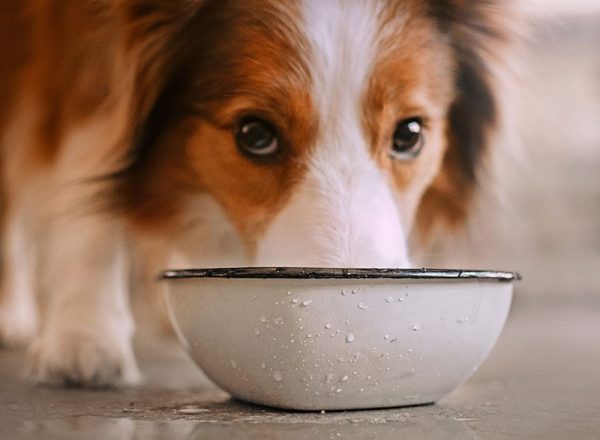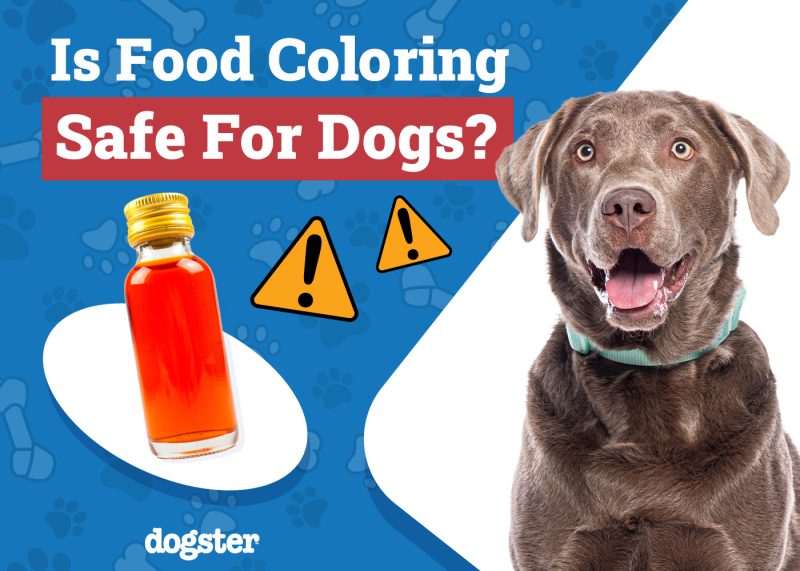Having a baby is one of the greatest moments of anyone’s life, but it can also be one of the most stressful and disruptive. Babies change everything about a person’s life, and they will shake the very foundations of your household. This change will extend to everything from your daily schedule to your habits and your outlook on life. But it will also affect your dog. Your dog will need to get to know your baby, and they will need to get used to you having a baby of your own. Introducing your baby and your dog can be a joyous occasion or a long and strenuous process. There are several steps and precautions you can take to ensure that this process goes as smoothly as possible.
Here are 20 important tips for introducing your baby and your dog, including things you need to do before the baby comes home and what to do once the baby is in the house.

Before Baby Comes Home
1. Go Over Basic Obedience Training
The first thing you need to start working on right away when you learn that you will be bringing a baby home is basic obedience. Your dog needs to have a strong grasp of all of the basic commands. Having your dog be able to listen to you is imperative. They also need to be able to follow directions in stressful situations so that they don’t slip up when the baby is crying.
- Sit
- Stay
- Stop
- Off
- Down
- Go
- Leave it
Ensuring that your dog knows these commands will give you peace of mind and will make introducing your baby and your dog much easier overall.
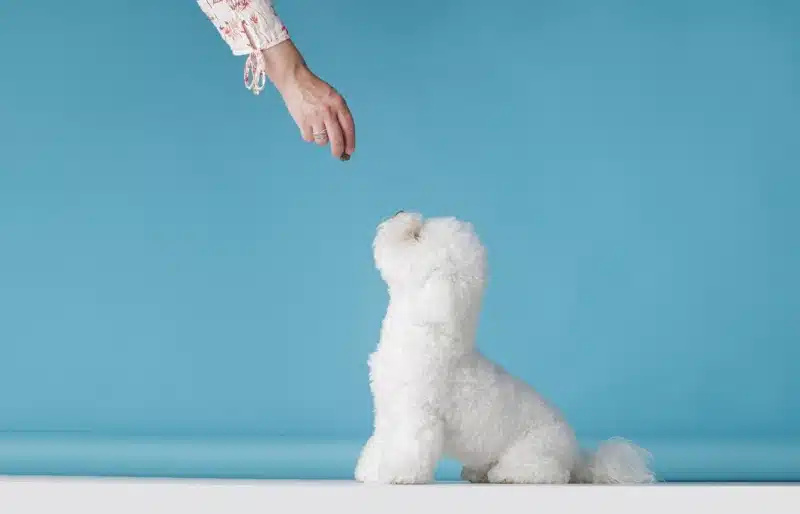
2. Build a Baby-Free Space for Your Dog
An important thing to provide for your dog when you have a newborn is a space to call their own. This will be a place where they can go to chill out or sleep. It is also a space where they can have treats or toys without risk of being disturbed. Dog spaces can be outdoor or indoor. They can be spare bedrooms, a special corner of the house, or a crate. This will be a space your dog can go to and feel safe in, and it will be a place that your baby will never go and disturb, which gives them a piece of stability in the house. Having this kind of space will help anchor your dog and will help reduce their anxiety.
3. Teach Your Dog to Go to Their Own Space
Whether you have set aside a corner of the living room, a crate with a dog bed, or a whole room for your dog, you need to teach them to go to it on command. You can teach words like “Go” “Crate” or “Room” to get your dog to go to their space. This will be important for when the baby comes home. When your dog goes to their space, reward them. You want to be able to send your dog to their specific space on command, and it is important to start working on this before the baby comes home.
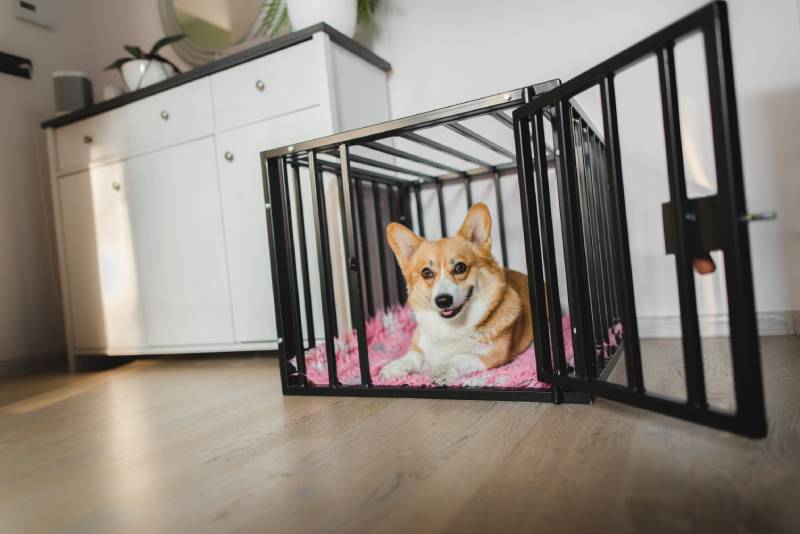
4. Practice Inviting Your Dog Over
One important skill that is going to be crucial with your baby is having your dog only come over when they are invited. You don’t want your dog bounding up to you uninvited and disturbing you and the baby. Now is the time to practice calling your dogs over when they are wanted and getting them away when they are not.
5. Build a Dog-Free Space for Baby
Many dogs are used to having free reign of the house, but it is a good idea to build a dog-free space for your baby. This can be as simple as keeping your dog out of the nursery, but you must have a space for you and your baby that your dog cannot freely enter. If you are going to be using a nursery, start letting your dog know that they cannot go into that room long before the baby comes home. By the time you are ready to bring your baby home, your dog should know that the baby’s space is off-limits to them. This will be very important when you are feeding a newborn in the middle of the night and don’t want your dog barging in uninvited.
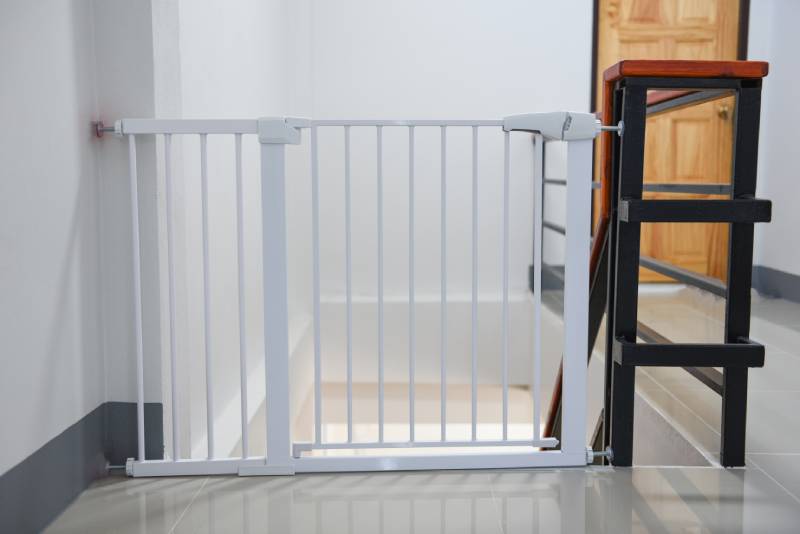
6. Start Keeping Your Dog Calm When Inside
Some people allow their dogs to do zoomies inside of the house. Other people play aggressively with their dogs while inside. This is fine for a home without children, but with babies around, you need to ensure that your dogs are calm and well-behaved when indoors. Before the baby comes home, make sure you are keeping your dog calm and relaxed while inside and let them get their energy out while on walks or out in the yard. Try not to get them hyped up or playing while inside, move these types of activities outside, and start practicing before any baby comes home from the hospital. This will help make sure your dog won’t run around and knock you or your baby over in the future.

When Baby Comes Home
7. Allow Cautious Sniffing
One of the first things you should allow to happen is some carefully supervised, cautious sniffing. Let your dog approach and sniff the baby. If they are calm and well-behaved, reward them. Do this in short bursts. Don’t let your dog sniff too much, and don’t let them get worked up due to excitement or fear. Cautious sniffing is the first step to blending your baby and your dog into one big happy family. This phase can last a few hours or a few days. You want your dog to become comfortable and used to the baby so that it is no longer something new and novel.
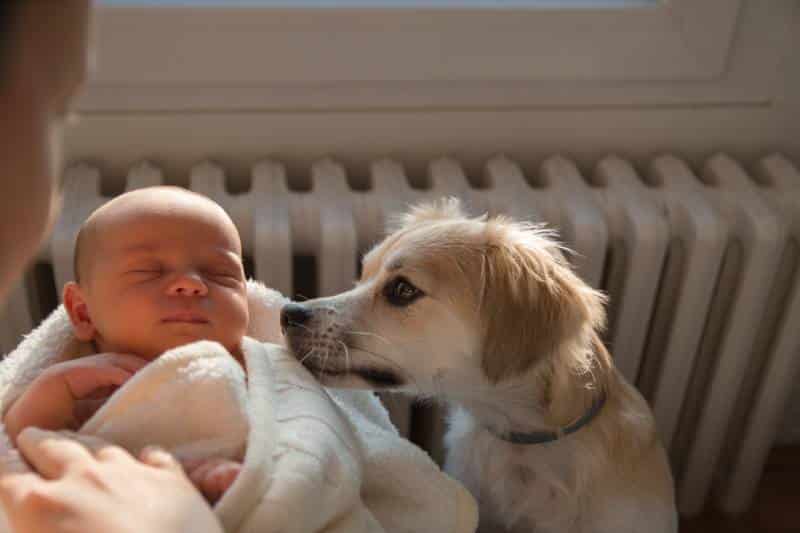
8. Keep Dog and Baby Separate at First
When you first come home with a new baby, it is a good idea to keep your dog and your baby completely separate. This will prevent your baby from getting overwhelmed (or exposed to doggy germs when they are just a few days old). It will also prevent your dog from getting too interested in your baby right away. Keep your baby in their nursery or by your side and keep your dog in their own space or outside for the first couple of days when everyone settles into the new normal. You don’t need to rush into introducing your dog and your baby. Take it slow and feel it out.
9. Invite Your Dog Over (But Also Keep Them Away)
Remember how we discussed practicing calling your dog over? Now, it is time to put that into practice. When you are ready to have your dog and your baby near you, you should call them over. If they come when called and are calm, you can reward them. However, if your dog is coming over when they are not wanted, you need to gently push them away or tell them to go lie down. This will teach your dog only to approach you and the baby when invited, which will be an important skill as your dog gets used to the new member of the family.
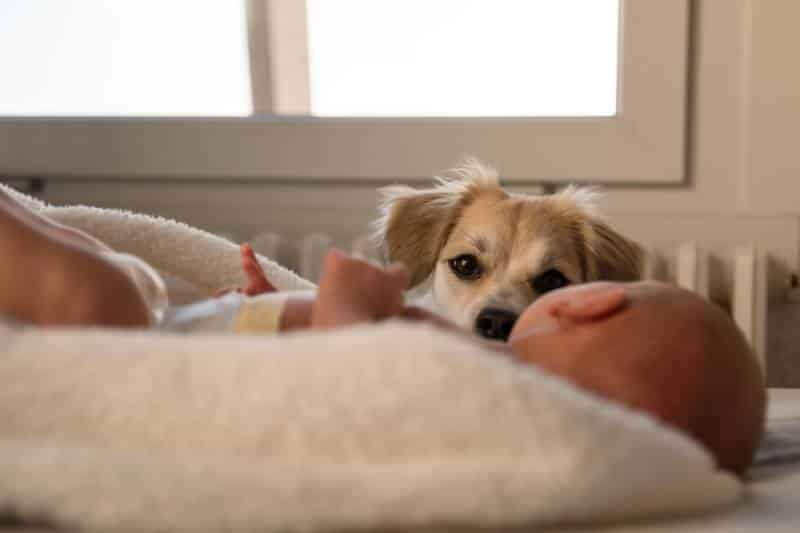
10. Use a Leash if Necessary
It might be necessary to keep your dog on a leash when you first start introducing them to your baby. This is true of large dogs, young dogs, hyperactive dogs, and dogs with a history of any type of aggression. The leash will allow you to control the environment while your dog gets to know your baby. This way, your dog will not be able to jump on your baby and if they start showing signs of anxiety or aggression, you can quickly pull them away and put them in their quiet space.
11. Notice Your Dog’s Mood, Anxiety Levels, and Cues
One thing you need to do when introducing your new baby and your dog is to keep an eye on your dog’s mood and anxiety levels. You should know their cues and recognize when the dog is getting scared, upset, anxious, or annoyed. Whenever your dog is showing signs of anxiety or irritation around your baby, you need to separate them immediately. Every dog is different, but some signs to look out for include growling, snarling, shaking, whining, and sulking. These are signs that your dog is starting to feel overwhelmed or upset, which can lead them to act out toward you or the baby.
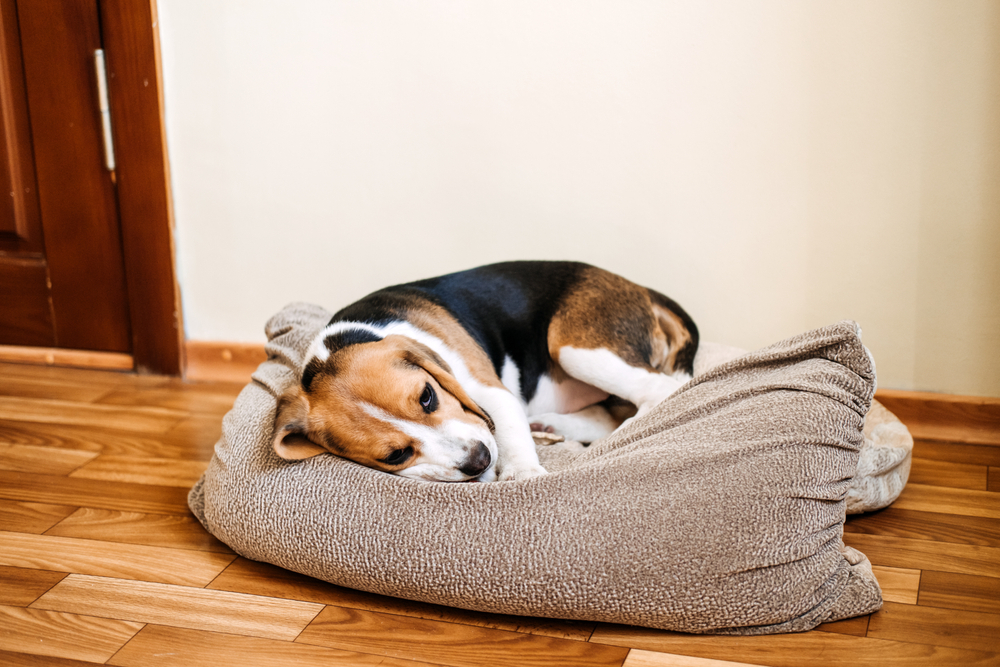
12. Don’t Punish Your Dog Around Baby
Your dog will likely experience increased anxiety around a new baby, which can lead to poor behaviors such as chewing, pooping inside, or seeking attention. These behaviors can be frustrating when you are dealing with a new baby, but it is important not to punish or scold your dog around your baby. Yelling or disciplining your dog around the baby can create a negative association between you, the dog, and the baby, which can make bonding between the two of them down the line more challenging. If you must scold your dog due to bad or new unwanted behaviors, make sure you do it out of the sight of the baby.
13. Keep Baby Toys and Dog Toys Separate
Toys can be a sore spot between babies and dogs. Anyone who has children knows that baby toys look and feel suspiciously like dog toys. Many dogs think that baby toys are dog toys, which can lead to them taking the baby’s toys. Sometimes, this is cute and harmless, but it can quickly become dangerous if your dog gets possessive of the baby’s toys and starts to guard them. Babies have no understanding of dog social cues, and having a baby try to take a baby toy from a dog can lead to a bad result. So, keep dog toys and baby toys separate at all times, and do not let your dog play with baby toys. (And yes, this is a bigger issue than people first imagine.)
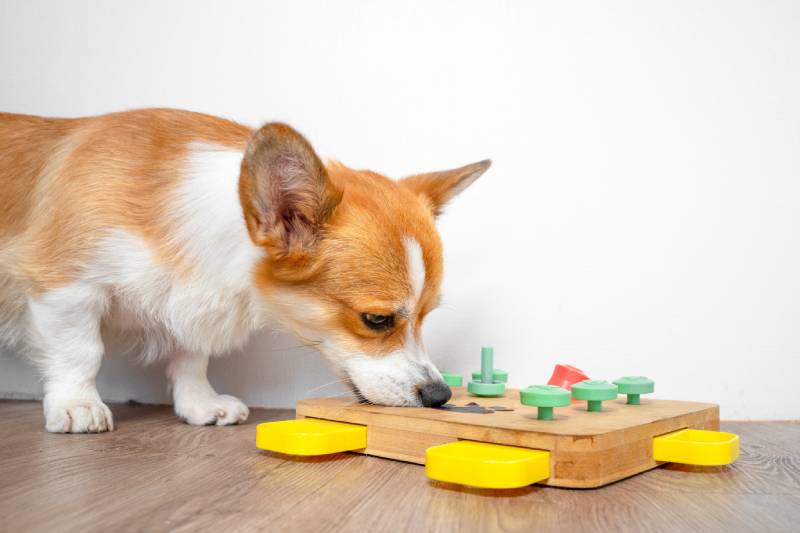
14. Always Know Where Your Dog Is
When you are introducing your baby and your dog, you should always know where your dog is. They might slink off to hide or get away from the chaos, but you need to know where they went. This way, they won’t surprise you by popping up and potentially disturbing you or the baby. Your dog does not always need to be in sight around the baby, but you do need to know where they are, especially about the baby.
15. Never Leave Babies and Dogs Together Unsupervised
You should never leave a baby and a dog together unsupervised. It does not matter if your dog has never shown any inkling of aggression. It doesn’t matter if your baby and your dog are best friends. You should never, under any circumstances, ever leave a dog and baby together unsupervised, even for a moment. Your baby should always be secure with you or in their crib or bassinet away from the dog if you are not able to watch them closely. It will only be safe to leave your dog and child together unsupervised when the child is much older. This is why your baby and your dog need to have their own spaces where they can go to get away from one another.
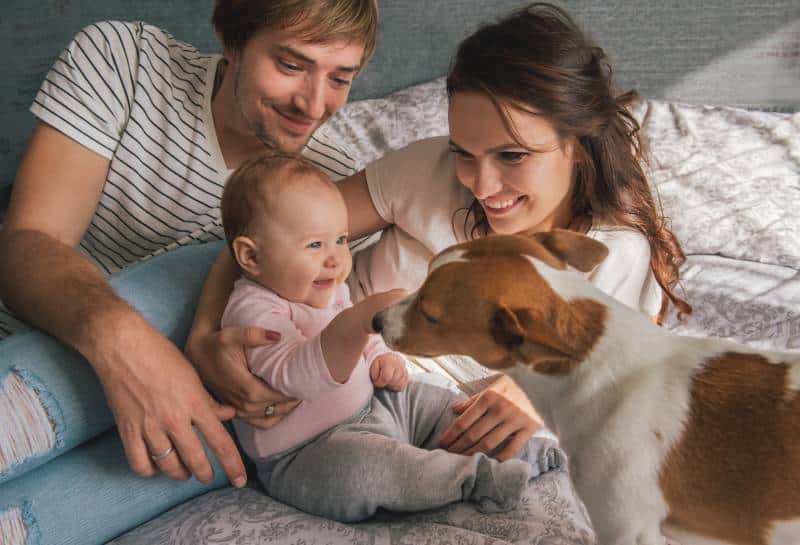
16. Take Your Time and Be Patient (Don’t Rush)
Bringing a baby home can be an amazing and exciting time. However, it comes with a lot of new stressors. Some people want to rush and ensure that their baby and their dogs are getting along, but you should not rush this process. Indeed, it can be a process. Rushing things will only put stress on you, your dog, and your baby. So don’t rush. Let the dog and the baby become familiar naturally. It might take days or weeks to ensure that everyone is getting along, but safety and peace of mind are the two biggest things to take into consideration. Pushing yourself or your dog too far or too fast can lead to anxiety and exhaustion, which can lead to everyone not being at their best.
17. Reward Good Behavior
Rewarding good behavior is still going to be a key pillar of your dog’s training and socialization. Don’t forget to reward your dog when they are being good. It is easy to forget to do this when you are feeding your baby or cleaning or washing bottles. If your dog has been good during these types of chores, don’t forget to give them some love, attention, or treats to reinforce their actions.
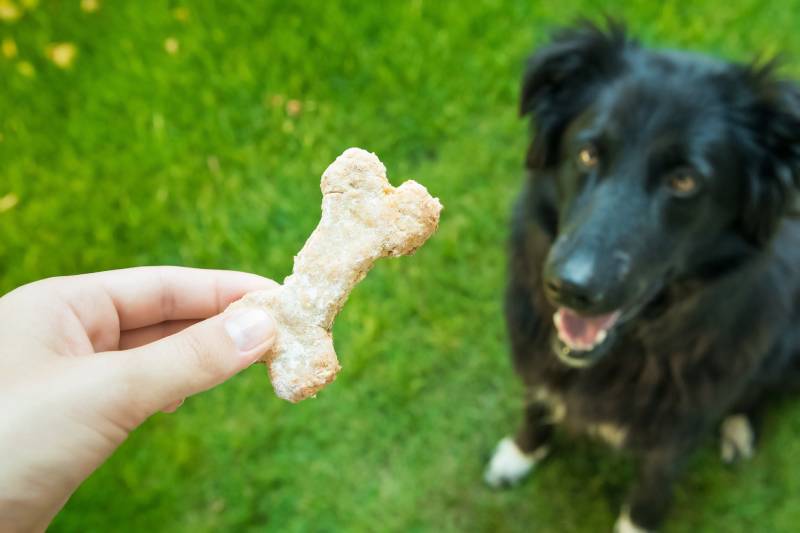
18. Encourage Quiet Time
New babies can be hectic, and your home will likely be more awash in sounds and frantic moving about. Whenever you get the chance, you should encourage quiet time for both your baby and your dog. Quiet time will help calm the house down, which can help your dog feel more at ease and less anxious about what is going on around them. You can send your dog to their crate (or room) during quiet time to allow everyone some time to decompress. It could give you a break, too!
19. Let Them Play as the Baby Grows
You can’t keep your dog and your baby separate forever. Eventually, they will need to become friends. When your baby continues to grow, you should let your dog and your baby start playing together (as long as the dog has never shown any signs of aggression toward your baby). Letting your dog play with your baby as they begin to crawl will help them bond, which will allow them to better coexist in the home.
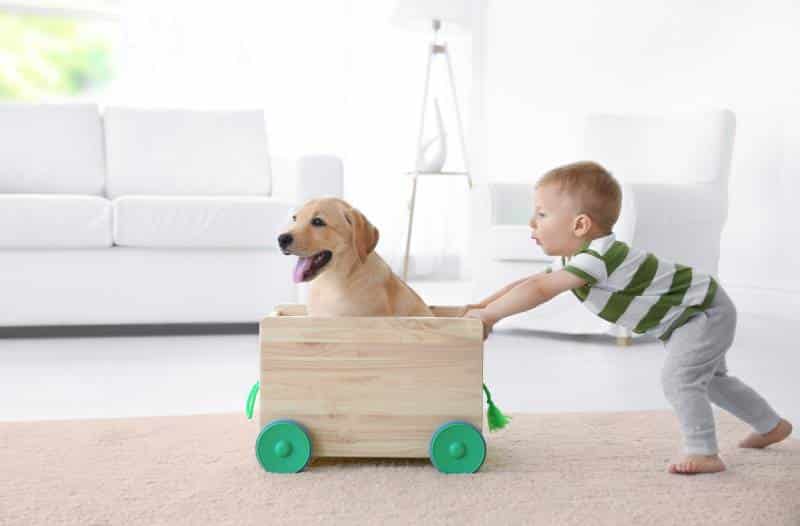
20. Don’t Neglect Your Dog
A new baby will consume your life. Every facet of your old life will be changed. Your attention is going to be almost entirely on your child and making sure that they are healthy. During this time, it will be easy to neglect your dog. However, your dog still needs time and attention. The dog will not be able to get as much time and attention as before, but you shouldn’t completely neglect them. They still need to play, eat, and get affection from you and the family. Amidst all of the chaos and change, be sure to set some time aside for your dog, even if it is only a moment or two. That will make your dog feel like they are still an important member of the family, which will help blend your dog and your baby.

Know the Risks
All dogs can be a bite risk. Even dogs that have shown no former signs of aggression or anxiety can become aggressive and anxious around a new baby. It is important to know the risks. Bringing a baby around a dog can lead to potential issues. Most families blend just fine, but other people encounter issues. You need to make sure that you keep your baby safe around your dog and know that making a mistake can lead to a biting incident, which can be very dangerous and scary for babies. You need to ensure that you are taking this situation seriously and know the gravity of the situation.

Conclusion
Some notes in closing. This list is not exhaustive. You could write a literal book about this subject, and everyone has different tips and pieces of advice that they would like to share about this process. Every home and every family is different. Furthermore, every dog is different. Not every tip on this list will work for every owner, but they generally represent good advice and the prevailing thoughts about the subject. The priority is keeping your baby safe. That should come before anything else. Then, you can work on creating a happy and harmonious household.
Featured Image Credit: Sarah Chai, Pexels
